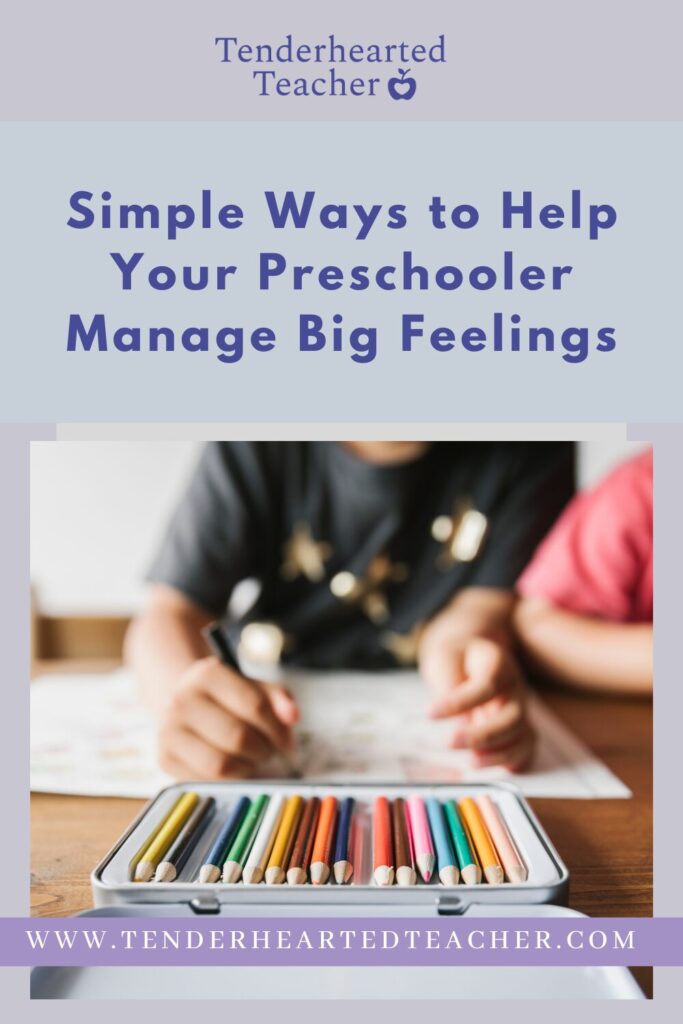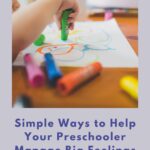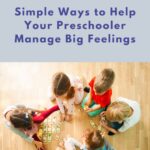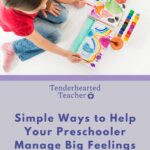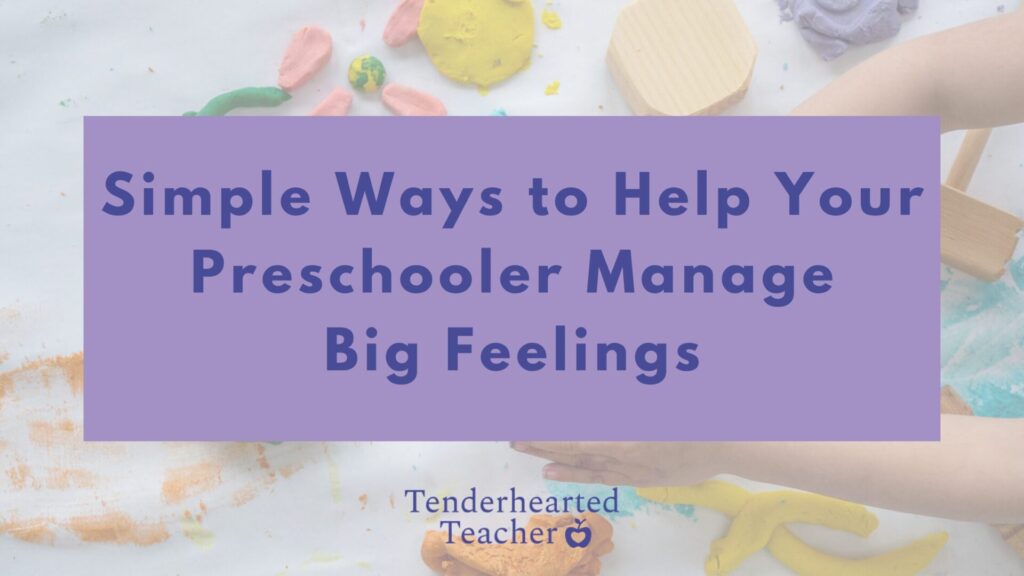
As parents or caregivers of preschoolers, we know that big feelings are commonplace (for adults and children alike!) Just think about how often you’ve felt frazzled helping your child handle their frustrations– i.e., tantrums over the wrong color crayon, the banana that broke in half, a sibling taking their toy, etc. These moments can seem overwhelming at the time, but they are a completely normal part of growing up. In fact, they are expected in early childhood as little ones learn to manage and express their emotions. The good news is there are things that you can do to support your little one during this stage of development. Today, I’ll share tips for creating a nurturing environment and activities to help your preschooler manage their big feelings.
Please note: This post may contain affiliate links. As an Amazon Associate, I earn from qualifying purchases. Therefore, if you buy something through these links I will receive a small commission at no extra cost to you. Thank you for your support.
Creating A Safe and Nurturing Environment
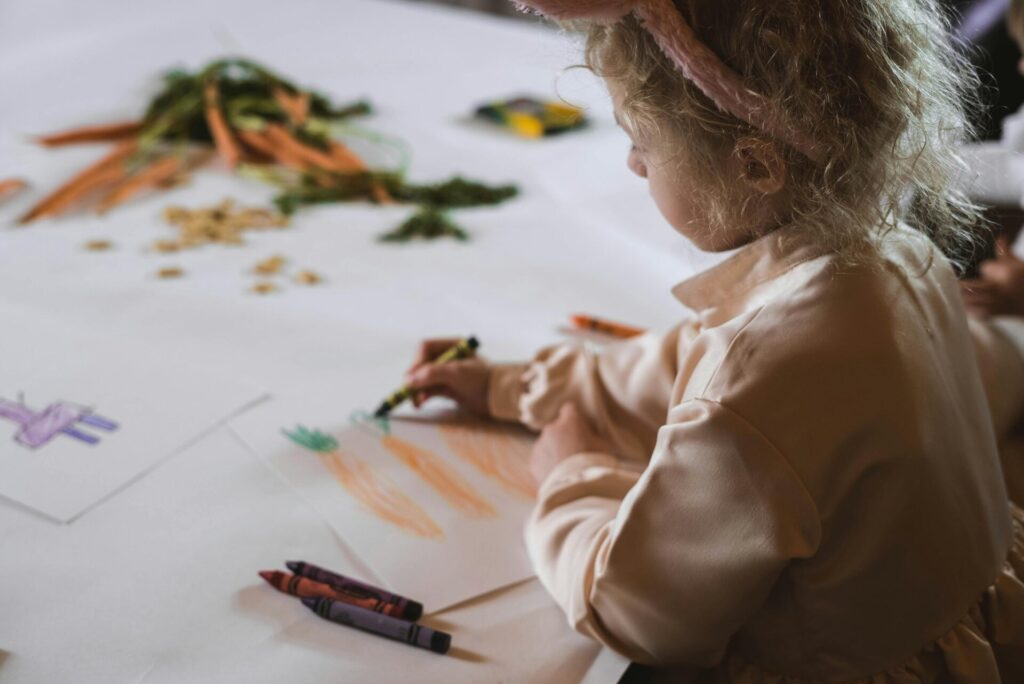
I want to reiterate that big feelings like frustration and anger, and the tantrums that come with them, are common for young children. These emotions ebb and flow as they navigate the world around them and learn to communicate their wants and needs appropriately. So while we can’t stop them altogether we can take steps to promote positive emotional expression. One of the most important things we can do is create a nurturing environment that helps our preschoolers feel safe with their big emotions. Here are some ways to support young children while they are learning to self-regulate and develop emotional intelligence:
Create a Safe Space and Validate Emotions
A nurturing home is not only created with kind and caring actions but also with a safe and welcoming physical environment. Children shouldn’t be shamed for experiencing big emotions. The most important thing is teaching them to manage these feelings safely without lashing out at others. If you can, provide your child with a “calm corner” or an area of the house where they can decompress, self-regulate, and take a break if needed. If your child is experiencing heightened emotions, approach them with a calm tone of voice, get down to their eye level, and acknowledge their feelings. Let them know you’re there to support them, but keep talking to a minimum. Sometimes too much conversation during a tantrum can exacerbate the behavior. So, instead, you can say something like, “I see you’re feeling angry about XYZ…I’ll be right here when you need me.” Once the child is calm you can discuss the situation, their feelings, and healthy coping strategies.
Establish Clear Routines and Boundaries
This is a biggie! Children thrive on routines because they provide guidance, structure, and predictability. Clear rules and boundaries go hand-in-hand with routines because they let children know what’s expected of them. A good way to establish these routines and expectations is by using a visual schedule. You can find my printable daily schedule here.
Model Calm Behavior and Practice Patience
I’ve stated time and time again that children learn by example. They behave in the same way they see their caregivers behave. So, adults must demonstrate appropriate and healthy ways to manage emotions and cope with frustrations and stress. In addition, they must model self-regulation when interacting with their children. For example, practicing patience, empathy, and understanding when a child exhibits challenging behavior is key. At times, we can lose our cool and that’s okay. No one is perfect. So if you find yourself in that position, give yourself some grace. Take a deep breath and step away to compose yourself. Additionally, try to set aside some kid-free time during the week to decompress, i.e. read a book, exercise, take a bubble bath, etc. These small moments, for ourselves, can help us to feel regulated and respond more gently to our children.
Provide Choices and Positive Reinforcement
Young children innately desire to become more independent as they grow and mature– this includes making choices and establishing their preferences. Therefore, early childhood is ideal for parents and caregivers to encourage independence. They can do this by providing choices and allowing children to make simple decisions, i.e. do you want to wear the yellow or blue shirt? This allows the child to feel a sense of control and potentially minimizes behaviors that can occur when they feel stifled. In addition, caregivers should praise their children and reward positive behavior and decision-making skills. This can help reinforce good habits and encourage emotional regulation.
Teach Problem-Solving and Social-Emotional Skills
Tantrums are an age-appropriate tool young children use to communicate their frustrations. They frequently occur because preschoolers lack the language to explain what and how they are feeling and they don’t yet have self-control. Developing appropriate communication and social skills comes with time and practice. Therefore, children need opportunities to problem-solve, use emotional vocabulary, and practice sharing, turn-taking, and collaborating with others. As these social-emotional skills develop, frustrations are reduced and tantrums become less frequent.
5 Activities to Manage Big Feelings for Preschoolers
Another great way to encourage social-emotional development and self-regulation skills is by using games and activities. I have many printable products in my Etsy shop that you can use with your preschooler to manage big feelings. Click on the images below for more details. Many products have bilingual English & Spanish versions as well.
1. Physical Activity
Regular exercise promotes emotional well-being. It also helps release pent-up energy and reduce stress. Try incorporating dance breaks (like musical freeze), yoga, or outdoor play into your daily routine. Please also feel free to check out my wellness workbook for kids. It includes several mindfulness activities in addition to yoga pose coloring pages. Instructions on how to do each pose are also included if you want to try them at home!
- Teacher, Tenderhearted (Author)
- English (Publication Language)
- 75 Pages - 05/12/2022 (Publication Date) - Independently published (Publisher)
2. Feelings Bingo
There are a lot of Bingo games on the market to practice numbers, letters, shapes, and colors. So why not try this classic game featuring emotions/feelings? This activity can help preschoolers recognize and understand different emotions and practice new vocabulary.

3. Emotion Games with Flashcards
Flashcards can be used to practice feelings identification and learn common social-emotional language while playing games like memory match, sorting games, and even charades.
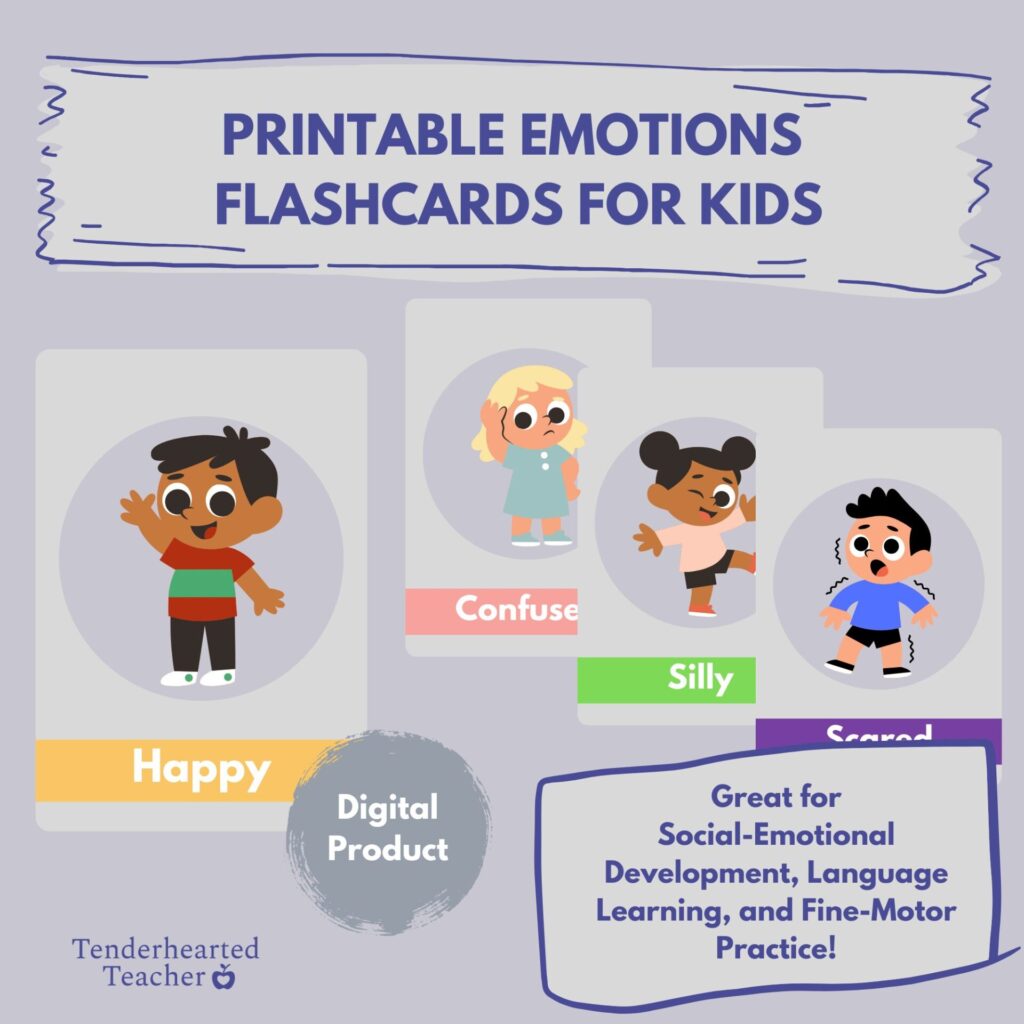
4. Emotions Playdough Mats
These playdough mats can teach children to label different emotions. Additionally, they are excellent tools for encouraging fine motor skills. This type of physical development (that enhances the small muscles in the hands) is critical for future writing abilities as well as independence skills like eating, dressing, and toileting. Playdough also has a calming effect as children roll and mold it into different shapes. So this is ideal if you’re looking for a quiet and relaxing activity.
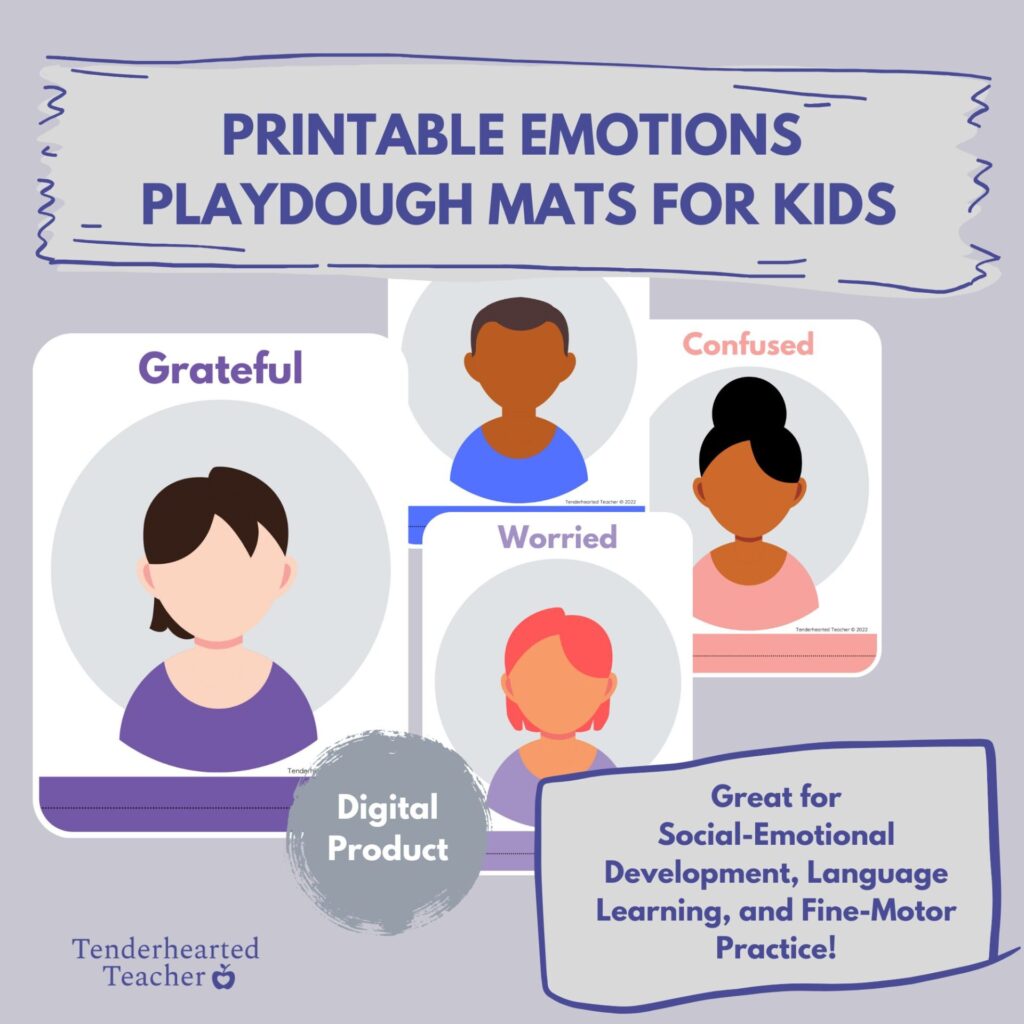
5. Emotional Expression Art
Children can learn to appropriately express their feelings through drawings, painting, or crafts. This activity serves as a creative outlet for big emotions and facilitates communication. Preschoolers can create emotional art using various materials like paint and crayons and can do so on a canvas or even in a journal.

Conclusion
By implementing these strategies consistently (and with a little patience,) caregivers can create a supportive environment where preschoolers can learn to regulate their emotions, communicate effectively, and thrive socially and emotionally.
If you notice that your child is having frequent unmanageable emotional outbursts or if challenging behaviors negatively impact their health or development, don’t hesitate to get in touch with your pediatrician.
Now talk to me! What are your favorite activities to help your preschooler manage big feelings? Share your suggestions in the comment section below.
SAVE TO PINTEREST
